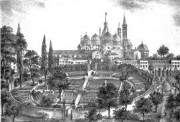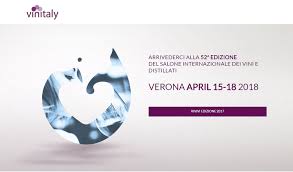Brief City’s History
Turin, also called the City of the 4 rivers (Po, Stura di Lanzo, Sangone and Dora Riparia) for their proximity to it, has a very ancient history. It was born with the likely name “Taurasia” in the third century BC, founded by the Taurini population, an ancient population of northern Italy, then destroyed in 218 BC by the Carthaginian warlord Annibale, it later became a military citadel thanks to Giulio Cesare in the 58 BC. (Iulia Taurinorum) and a true colony ( founded by the Emperor Augustus ) in the 28 BC (Julia Augusta Taurinorum). In the period following the Roman Empire it passed first under the Goths dominion and then under the Longobards’, becoming the capital of an important Duchy. After the Longobard era Turin became a capital of a Carolingian feud (773 AD). In 940 AD the Marca di Torino was founded, which brought the City under the influence of the Signora Savoy. In 1280 AD, after have been a free commune, Turin became first a County and then, in 1563 AD, the capital of the Duchy of Savoy. In 1706 d.C.the Duchy of Savoy rejected, after 117 days, a powerful siege by Franco-Spanish troops during the Spanish war of succession. Since 1720 d. C. Turin became the symbolic capital of the Kingdom of Sardinia, becoming its real capital in 1847 AD, thanks to the fusion of the Kingdom with the Savoy Duchy. From 1800 to 1814 d.C. Turin was controlled by Napoleon. After Napoleon’s sunset, the Vienna Congress gave back the Piedmont and the Kingdom of Sardinia to Savoy family. With the Risorgimento and the independent uprisings, the Kingdom of Sardinia in the nineteenth century was fundamental to the unification of Italy, when Turin became the first capital of the Kingdom of Italy (from 1861 to 1865 AD).
The City
Turin, the regional capital of Piedmont, counts today about 885,000 inhabitants and is 239 meters above sea level, at the foot of the Alps, which, majestic, look down at it from their peaks. Turin already in the Middle Ages (1280 AD) was first County of Savoy and after Duchy of Savoy, until the Dukes of Savoy obtained the title of King, with the union of the Duchy to the Kingdom of Sardinia. Thereafter it became the capital of the newborn Kingdom of Italy, from 1861 to 1865. Today the City preserves the magnificence and elegance of the Savoy’s dynasty. Avenues, palaces, squares, monuments … everything speaks of the great Italian nobility that built it. It is a cultured City, refined and discreet, active without the typical metropolitan chaos. Walking through its streets you will find museums, palaces, old great cafes, markets, parks, cool restaurants, contemporary art galleries, young artists’ studios, and beautiful shops.
To be seen
. Mole Antonelliana with National Museum of Cinema: it is an imposing nineteenth-century building, today 167.5 meters high. It’s the symbol of the City of Turin. Initially, the Mole was built, in masonry, as a Temple of Israelites, and later swapped by the Jews with the Turin Municipality for a plot of land where a Synagogue was then built. the Mole was dedicated to the King of Italy Vittorio Emanuele II°; its massive masonry base is dominated by a large dome which inside has a central lift that leads to a little temple above, from which you can admire a 360 degree view of the whole City. Above the temple lies the Lanterna, a 50 meter steeple that first housed, atop, a statue of the winged Genius (then collapsed because of a lightning), then a five-pointed star, also collapsed during a strong storm togheter with much of the steeple , and finally another three-dimensional star with 12 tips. Today the Mole structure has been reinforced with concrete structures and steel beams and hosts the National Cinema Museum with pieces from the cinematic sets of the first Italian and foreign films and vintage cinemas objects.
. Royal Palace: the Palace has remote origins. When it was intended as the Royal residence it was redesigned, between the end of the sixteenth and the beginning of the seventeenth century by Ascanio Vittozzi, and later refurbished several times until the nineteenth century. The Palace, with its sumptuous interiors and its charming gardens, has been the residence of some Savoy House heirs until the end of the nineteenth century, when they moved to Palazzo Pitti in Florence. With the Monarchy sunset in 1946, the Palace was converted to Museum. Today it is part of the Royal Museums along with the Sabauda Gallery, the Archaeological Museum and the Royal Arcade.
. Egyptian Museum: It is considered the best in the World after the Cairo’s; it one of the most visited in Italy. In the early 1800 many italian collectors have collected precious findings coming form Egypt. King Carlo Felice di Savoia bought the most of them to create a Museum in Turin and as time went by many other objects were added. In 2013 Times magazine has put it in within the thirty best Museum in the World. In 2015 it was restored and its floor area has become 60.000 sqm.
. Savoy’s Gallery: the Gallery hosts more than 700 masterpieces of important painters active in the period 1200-1900 A.D. collected by the Royal House of Savoys. During the centuries it has had three different abodes: Madama Palace before, on the second floor of the Sciences Academy Palace then and today inside the “new sleeve” of the Royal Palace, now connected to Royal Mus
eum where are also Royal Armory, Archeological Museum, Royal Library.
. Madama Palace: at the beginning it was a Roman gate, later castle and symbol of Savoy’s power before they moved to the Royal Palace. It took then the name of Palazzo Madama cause it was inhabited by Madama Cristina di Borbone, wife of Vittorio Amedeo I° of Savoy. Today it hosts a civic Museum of antique art with important paintings and sculptures of the past together with art fairs and exhibitions.
. In the City you will then find many other important places to see as: 1) Palazzo Carignano which hosts the Museum of Risorgimento; 2) The Lingotto where the first FIAT factory was born and now symbol of Italian industrial archeology; 3) The Venaria Palace, a Savoy’s important Royal mansion; 4) The Savoy Gallery; 5) The Superga Basilica; and many other Churches, Museums, Savoy’s mansions, Squares and Monuments.





